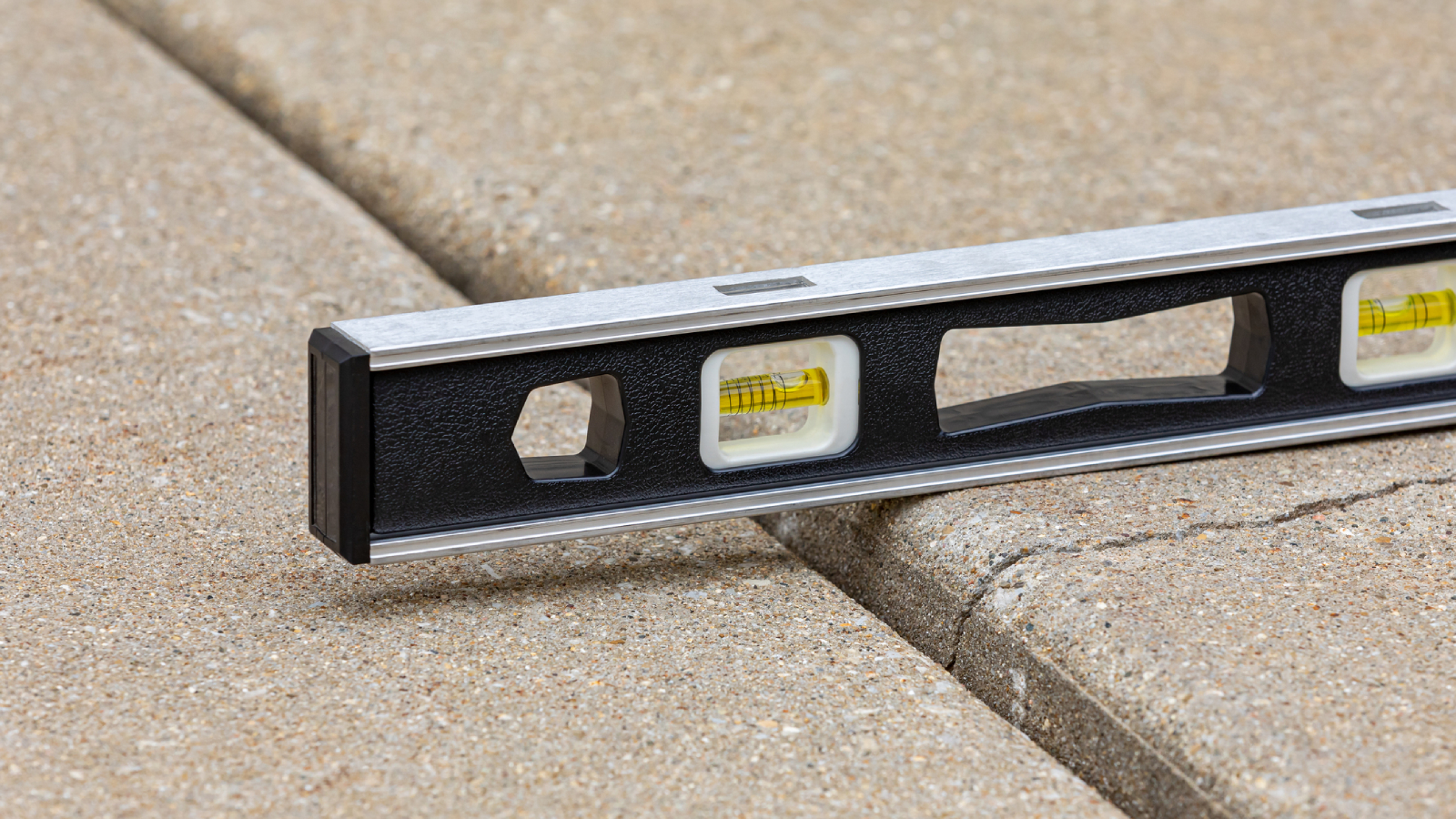Types of roof tiles explained: How to choose the best roof tiles for your home
Struggling to decide between types of roof tiles? We're here to explain all your options, from eco-friendly choices to contemporary materials right through to some tried-and-tested classics

Choosing the right types of roof tiles is essential in order to complete your project in style. This is one element that it really pays to do your research on. Whether you are building, renovating or extending, this is your chance to add some crowning character to your project.
Roofs occupy such a prominent and obvious position meaning that your choice of roof covering is just as important as the way you choose to clad your property and the windows you fit. Not only will it form a protective shield over your home but it also needs to look good.
From traditional and timeless clay roof tiles to more contemporary metal roof coverings, the material you choose for the surface above will create a distinct personality to your home.
Of course, some types of roof tiles suit certain styles of house more than others. While in other cases you may find yourself restricted by strict planning rules relating to the materials you are allowed to use.
Here, we take a look at some of the most beautiful options and explain what benefits each material could bring to your roof.
Choosing the right types of roof tiles for your house
Before getting ahead of yourself and dreaming of a roof covered in striking zinc or weathered handmade clay roof tiles, it is crucial to make sure that you have carefully considered what materials and styles are going to best suit your house. Bear in mind too that the roof can account for as much as 20-30 per cent of the visible exterior area of a house.
Not all roof coverings are going to suit certain houses, plus some will just not be practical in certain locations, will not work with the pitch of the roof, or because of budget restrictions.
Bring your dream home to life with expert advice, how to guides and design inspiration. Sign up for our newsletter and get two free tickets to a Homebuilding & Renovating Show near you.
When it comes to the main types of roof tiles there are three designs to consider: pantiles, interlocking and plain, all of which are generally available in clay, concrete and slate.
Here we delve into the types of roof tiles you might consider.
1. Interlocking roof tiles
Beloved by developers and those on a tight budget, interlocking tiles – usually made from concrete – are the cheapest way of covering a pitched roof. They are shaped to fit together tightly so only a single lap is needed. They are very large and don’t require much in the way of an overlap and so as few as 10 can be used to cover a square metre, which makes them very quick to lay.
Another benefit is that they can be specified on roofs with shallower roof pitches, which is not the case with all types of roof tiles.
However, they lose much of their cost advantage where the roof shape is more complex and lots of cutting is involved while tiling a roof.
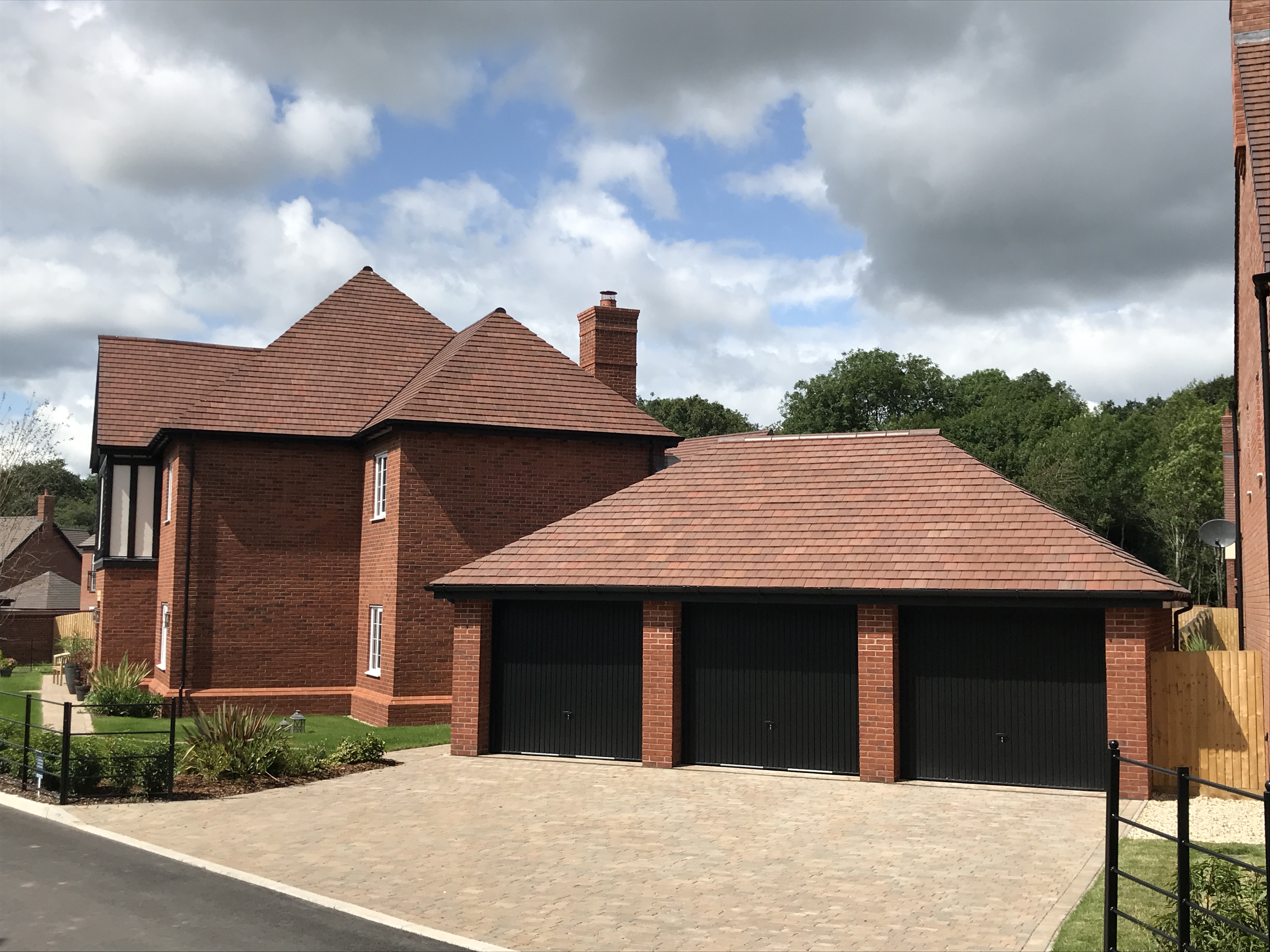
2. Plain roof tiles
Plain tiles are laid at around 60 tiles per m² and give a far more traditional look than either pantiles or interlockers.
Although they vary in price and in appearance, they are generally simple and rectangular in shape and tend to be smaller than interlocking tiles. They are laid 'double-lapped' and result in a subtle, traditional look.
At the upper end of the market are handmade plain clay tiles, where every tile looks different, adding a wonderfully rich texture and plenty of character to the roof.
On the downside, they are more costly than interlocking tiles.
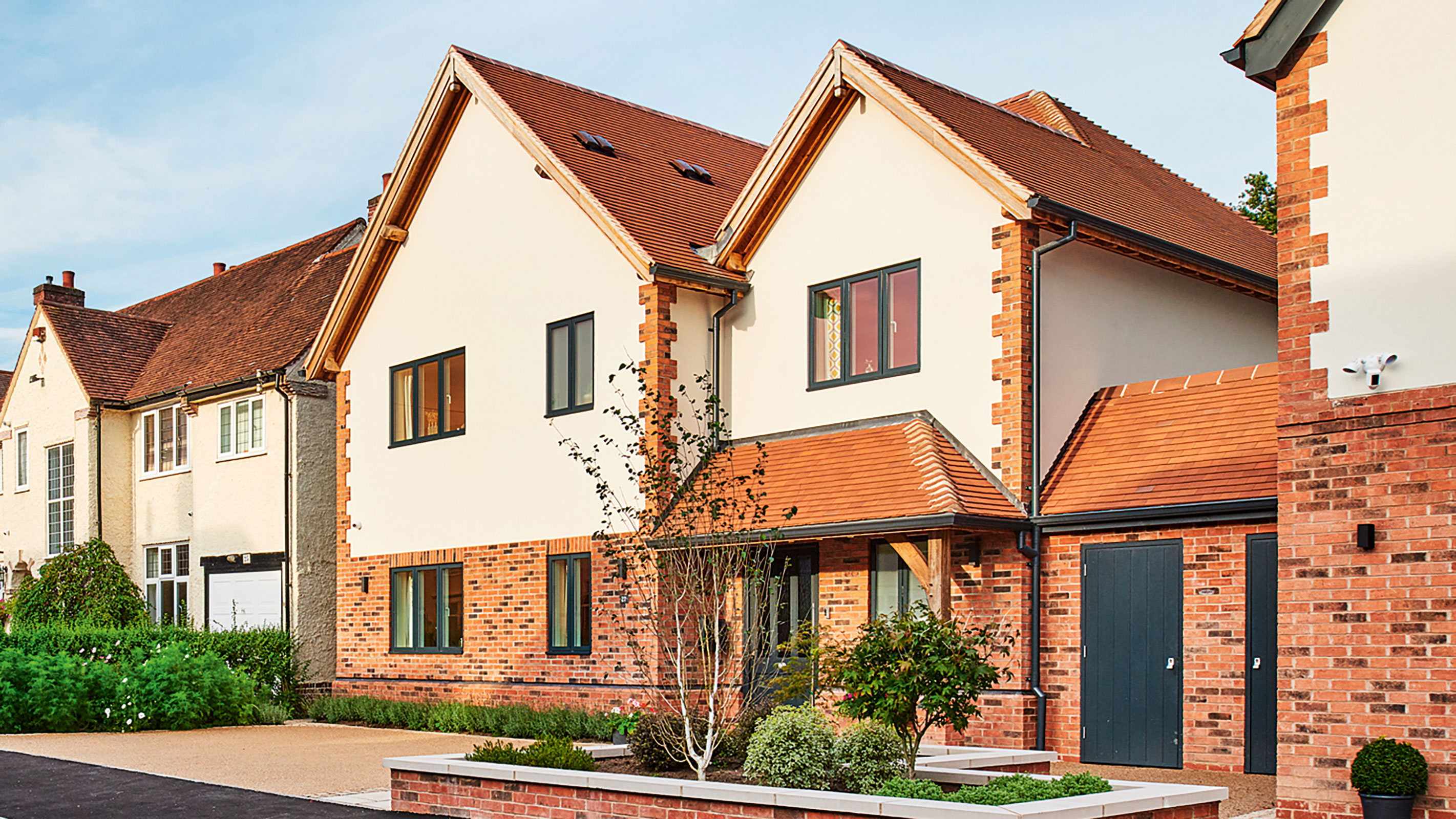
3. Pantile roofs
Pantile roofs were almost the forerunner to interlocking tiles, and are widely specified on the eastern coast of England and throughout Scotland, where they are a vernacular choice.
Although usually thought of as a traditional option, they are also now available in more modern designs and in materials other than clay, making them a more affordable option than they once were.
Pantiles are large format, S-shaped tiles designed to be laid in a side lapping arrangement, with the ends of the tiles overlapping the course directly below. While traditional clay pantiles were not interlocking and were single and had a right-hand edge that turned down and a left-hand edge that curved upwards, they are now available in different profiles too, such as double pantiles.
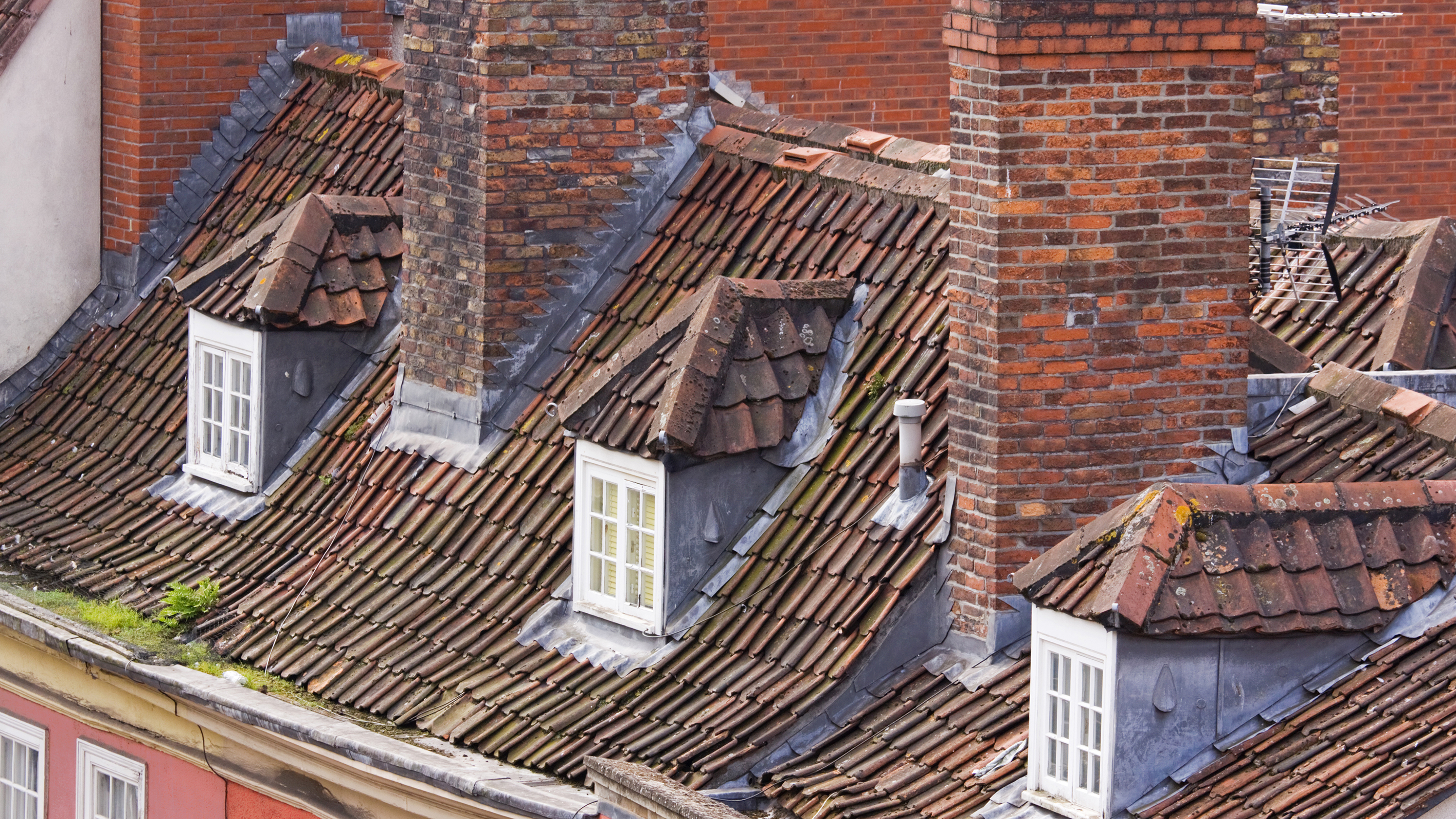
4. Clay roof tiles
This type of roof tile is available in a huge range of beautiful colours, from characterful reds to eye-catching greys and blues.
Clay roof tiles also come in design that are suitable for both traditional and modern homes. Clay roof tiles come in all kinds of sizes and profiles, including the very widely used plain and S-shaped pantile units, to intricate designs, such as bullnose — ideal for many period homes.
One of the biggest draws of clay roof tiles is that their appearance actually tends to improve over time rather than degrade — their colour will not fade and the weathering process often only serves to enrich their tones.
On the downside, they are most certainly not the cheapest option around. Although opting for machine-made rather than handmade will go some way towards cutting costs.
Roofs with a gradient of 35° or steeper are considered suitable for this type of covering. That said, certain interlocking clay tiles are now available for roof pitches as shallow as 15°.
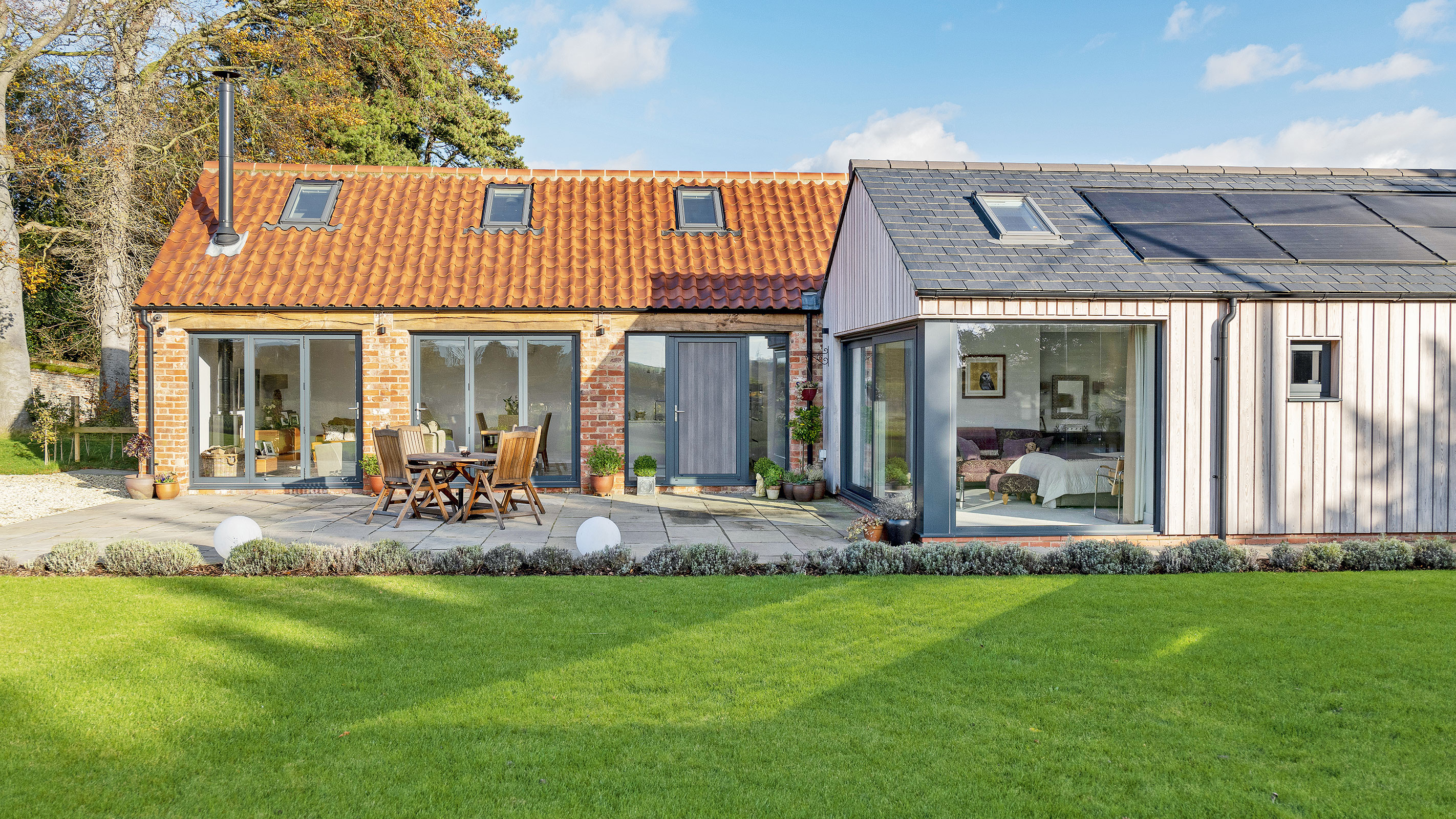
5. Concrete roof tiles
Both interlocking and plain formats are available in either concrete or clay. Concrete roof tiles are always cheaper, usually around 20% less, but they never weather as well as clay, which tends to improve with age. In contrast, the colour of concrete roof tiles tends to fade and weather after a number of years.
For most people the debate between concrete vs clay roof tiles comes down to cost as opposed to looks. There is also the matter of pitch. Concrete roof tiles can be used on roofs with lower pitches than clay — some on pitches lower than 15˚.
Do bear in mind that concrete tiles tend to be heavier than clay. Your roof structure will need to be suitably strong in order to take their weight so talk this through with your roofer or builder.
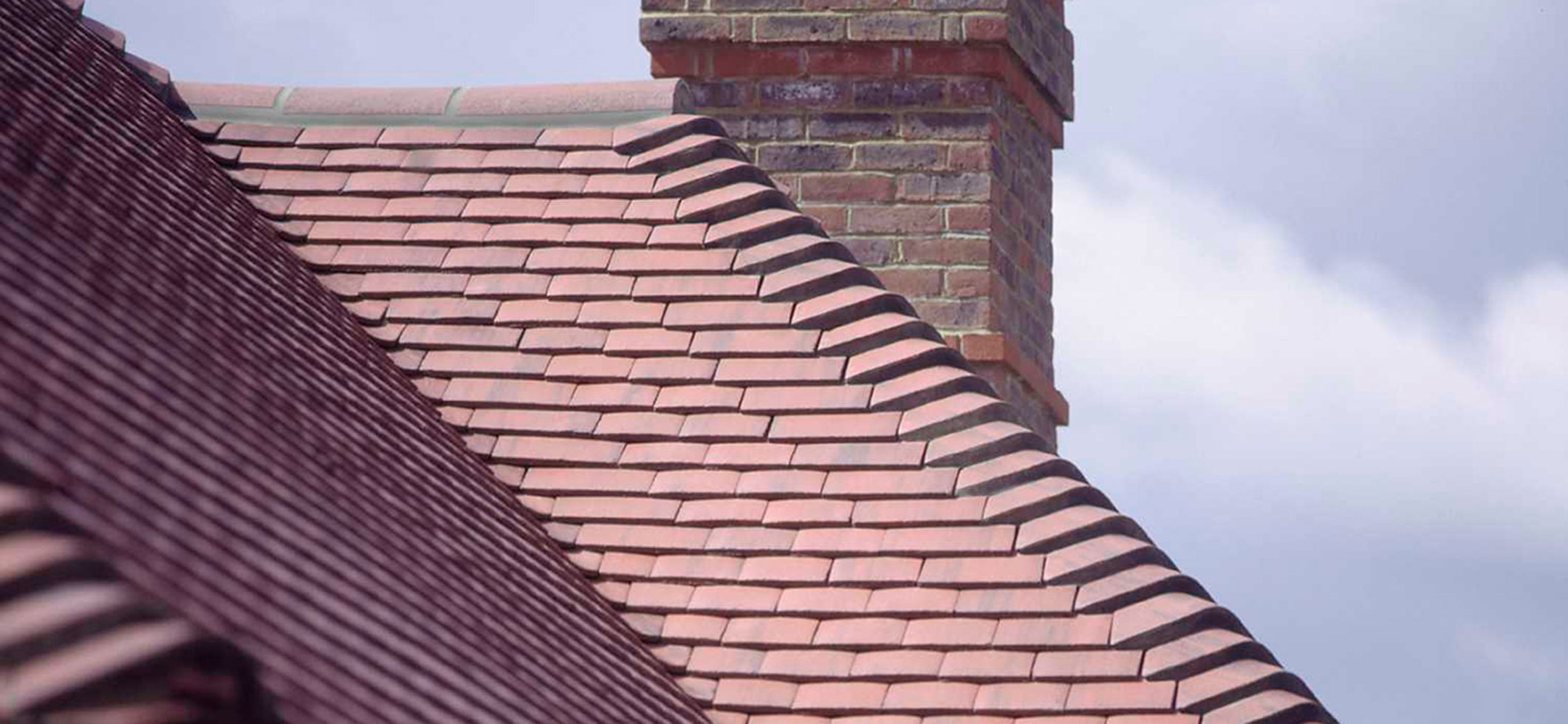
6. Slate roofs
Slate roofs became the roofing material of choice for the Victorians, with the railways opening up the Welsh slate quarries to the whole of the country. Today it continues to be in demand, both as a replacement and as a new material, though most slate is now imported from Spain or China.
Slate looks good in both traditional and modern designs and is a fair, mid-priced option for a roof covering. It also gets better with age.
There are a number of slate alternatives available. Some are basically thin concrete tiles, some use fibre-cement, and a range use reconstituted slate — basically slate dust bound together with resin. These can be moulded to look like natural slate and are available as interlockers, making the laying much simpler and quicker.
It is generally advised that a minimum roof pitch of 20˚ is suitable for slate roof tiles — although their size will dictate the pitch they can be used on.
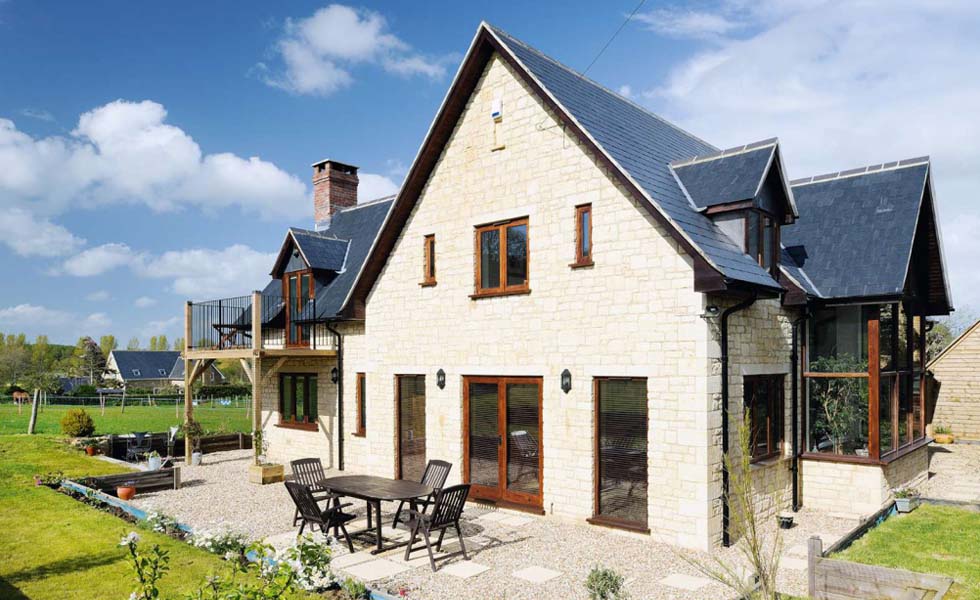
7. Stone roof slates
Although less widely seen that the other types of roof tile mentioned here, stone roofs are a common sight in the Cotswolds, Yorkshire Moors and other rural areas of the UK.
A stone roof can last 100 years and could even last 200 to 300 years if well cared for — so whether you are renovating or building a new house with a stone roof, it is vital to get the laying spot on and maintain it properly thereafter.
Split slates as opposed to sawn slates are preferred by planners and it is always advisable to use the services of an experienced stone roofer to lay this type of roof. They will understand how to ‘dress’ a stone slate with a chisel edge hammer or similar. They will also be able to dress any damaged slates to a smaller size to be used higher up on the roof if required. Plus they are usually skilled in how to repair a roof in need of some TLC.
Stone roofs are typically at a minimum pitch of 45˚. They are certainly not a cheap option, but are incredibly long lasting and, in some cases, the only option for those with listed or historic homes.
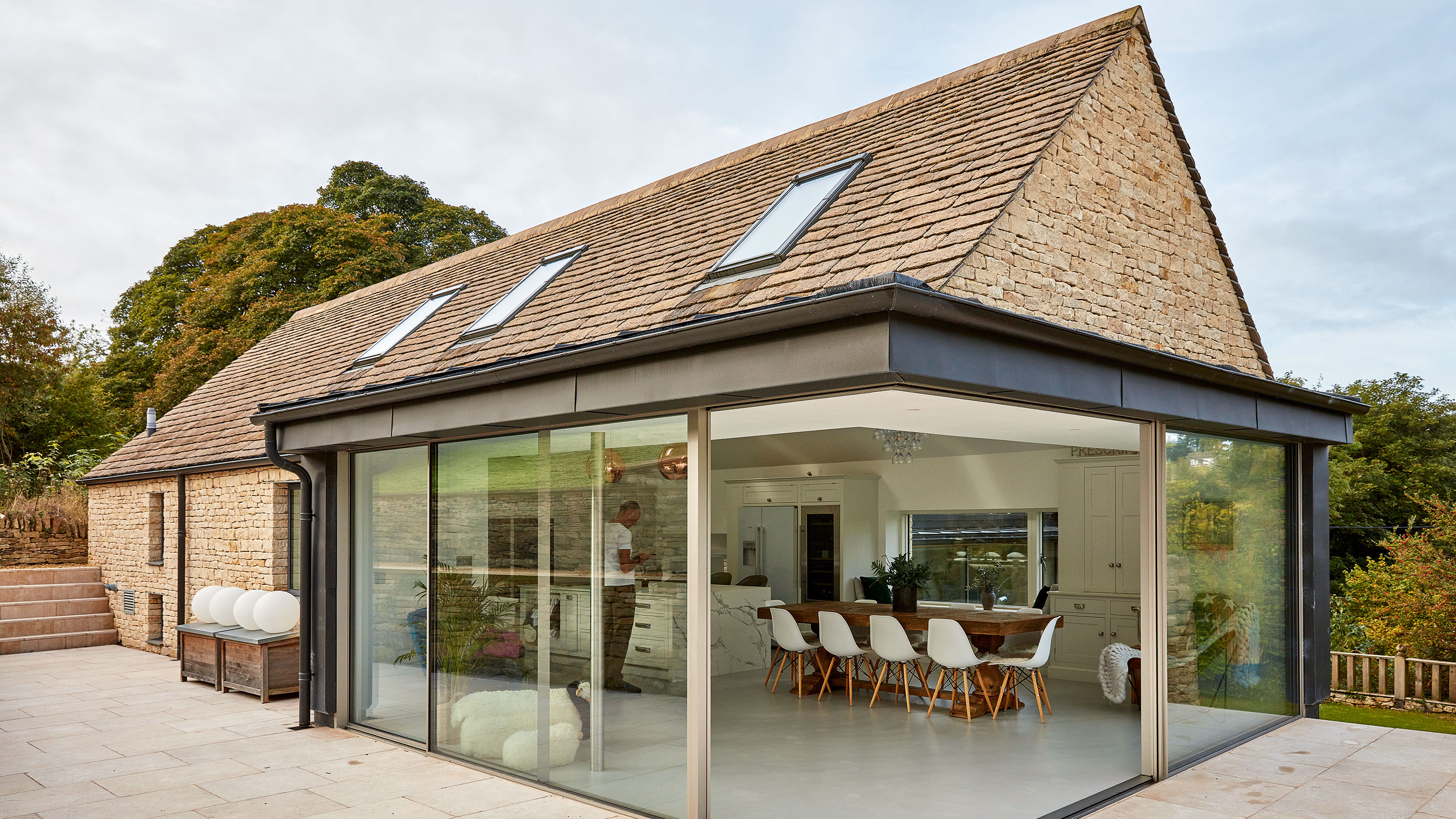
Which types of roof tiles are best?
The best type of roof tile for each project will be based on budget, location and style preference — and in some cases by the types of roof they are being laid on. Sometimes, especially if you live in a conservation area, the materials might be dictated as a planning condition.
Both stone slates and clay roof tiles are the most long-lasting options — but do carry a hefty price tag than other materials.
For those on a budget, concrete roof tiles are going to be very appealing. They have a similar life span to clay but will fade and lose much of their initial appeal appearance-wise over time.
What are the cheapest roof tiles?
Cost is likely to play a large role when it comes to making your decision on what type of roof tile to opt for and while you certainly don't want to scrimp in a way that will mean you end up with a unattractive final roof finish or one that requires replacing in a couple of years, some materials are undoubtedly more suitable for those on a tight budget than others.
And it's not just the material cost you need to consider — installation costs can also be a factor. "Of the three mainstream roof covering choices, plain tiles, whether clay or concrete, tend to be the most expensive, and that’s mainly down to the increased labour costs of having to lay and fix around 60 tiles per square metre," says self build expert David Snell, author of Building Your Own Home.
"Each interlocking tile costs over twice the cost of a plain tile. But, at an average of 11 to the square metre, far fewer tiles are needed and the labour costs for fixing them are significantly reduced," he explains.
While slate and clay tiles tend to start at similar prices, handmade clay are generally more expensive.
What tile roof alternatives are there?
Of course tiles are not your only option when it comes to roof covering — there are many alternatives to consider, some of which may well be more suitable for your house.
Thatched roofs today exist primarily as a restoration activity, but every year there are few thatched new builds as well. Thatching is not something you would ever consider adding to a house as an afterthought — you more or less have to design the house around it. Thatch roof costs are considerable and thatch roofs require fairly frequent attention over the years.
There is currently enormous interest in green roofs, whether that's wildflower planted or sedum. In fact, these are nothing new – being commonly used in parts of Scandinavia and Scotland for hundreds of years – but today’s green roof is a very different beast.
You have to build such a roof up in layers, paying careful attention to waterproofing details, and the planting regime has to be carefully thought through. There are many environmental benefits claimed to derive from using green roofs, but these are hard to substantiate.
Metal roofing is a somewhat specialised roofing material. It’s typically laid in sheet form and the two most popular metals currently being used are zinc and copper. Lead is now mostly used for flashing material, around chimneys and at roof junctions.
There are also steel roof tiles available, which are an alternative to concrete, clay or slate, especially suitable for windy sites.
Finally, single ply membrane is a great, lower cost, alternative to metal roofing that is ideal for flat roofs and can do a very good job of mimicking zinc when installed well.

Mark is the author of the ever-popular Housebuilder’s Bible and an experienced builder. The Housebuilder’s Bible is the go-to hardback for self builders; originally published in 1994, it is updated every two years with up-to-date build costs and information on planning and building regulations, and is currently in its 14th reiteration.
He has written for publications such as Homebuilding & Renovating for over three decades. An experienced self builder, his latest self build, a contemporary eco home built to Passivhaus principles, was created on a tight urban brownfield plot.

